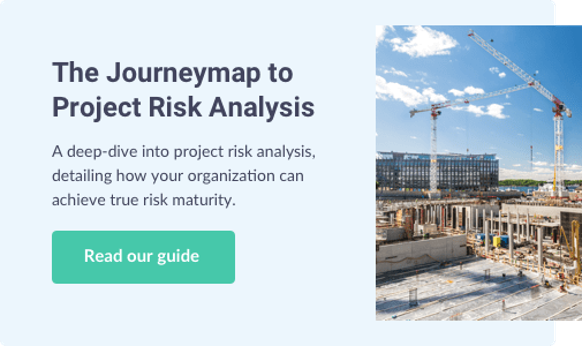Change is a formidable challenge. We humans tend to cling to our comfort zones, often resisting change with the familiar refrain, "if it ain't broke, don't fix it." While this mindset served us well in the past, the modern world demands a different approach. Our era is defined by digital disruption, where innovation, continuous improvement, failing fast, and perpetual beta have become the guiding principles for staying in the game. One key principle for managing change is understanding your Risk Management Capability.
What is Risk Management Capability?
Simply put, it’s the ability of any state or entity to reduce, adapt to, or mitigate risk impacts, including the likelihood of disaster and ensuring that these risks are identified in risk assessments to levels that are acceptable to the entity.
We may all agree that progress in the information age has come with unintended consequences. While we’ve undoubtedly benefited from what was once called teleworking, and the internet has provided instant access to a vast sea of knowledge, knowledge without experience falls short compared with true expertise. Further, our hyper-connected world has led to information overload and friction in unnecessarily complex and inefficient systems.
Why is Risk Management Capability Important?
In a world characterized as VUCA (volatile, uncertain, complex, and ambiguous), risk management capability is paramount. It’s no longer sufficient to assess risk solely from a strategic standpoint. In today’s volatile landscape, forecasts can crumble in an instant, making real-time risk management essential for tracking team performance against baseline budgets and plans.
Keys to Understanding your Level of Risk Capability
Self-awareness is another critical factor, and a maturity model can help project teams understand their current level of risk capability. As Thomas Jefferson wisely noted, “The wise know their weakness too well to assume infallibility, and he who knows most knows best how little he knows.”
Each team’s risk management capability can range from rudimentary to world class, and having awareness of stretch goals not only enhances capability but also provides the motivation needed to maintain a competitive edge. Stretch goals are ambitious targets set by project teams, which encourage a team to complete a challenging task. While these types of goals can stretch a team’s capacity, they can also encourage enthusiasm, motivation, productivity, and innovation.
What are the 4 Attributes of Risk Management Capability?
Hillson identified four attributes of risk management capability:
- Culture: Without demonstrable top-down commitment, risk management efforts will struggle to engage stakeholders and gather high-quality data.
- Process: The quality of an organization's decisions is directly influenced by the environment in which the risk management process operates. Data-driven decision-making and consistent data capture are vital for success.
- Experience: Teams benefit from consistent access to personnel with meaningful risk management experience, leading to the implementation of risk policies and performance improvement.
- Application: Equipping teams with the right tools is essential for achieving risk policy goals, enhancing risk identification, and facilitating effective knowledge sharing.
Dr. D. Hillson, the Risk Doctor, aptly described applying a maturity model as "walking up the down escalator," emphasizing the need for flexibility in capability objectives at both personal and organizational levels. A maturity model is used to measure how well a business is doing and how capable they are of continuous improvement.
The Role of Organizational Change Management in Risk Management
Continual improvement is the linchpin of ongoing organizational change management (OCM) in risk management. It requires a group-wide OCM campaign to ensure uniform, forward-facing change and training to instill an improved risk culture. Strong leadership support from the top down is crucial for gaining traction in this endeavor.
What's Next?
If your organization is facing uncertainty with projects, and seeking ways to embrace continual improvement, our top tier software tools can help you manage critical project risks. If you want to optimize your organization’s ability to manage successful projects, contact us to find out more about Safran Risk, and let us tailor a strategy so you can improve your risk management capability with the guidance of a trusted advisor.



